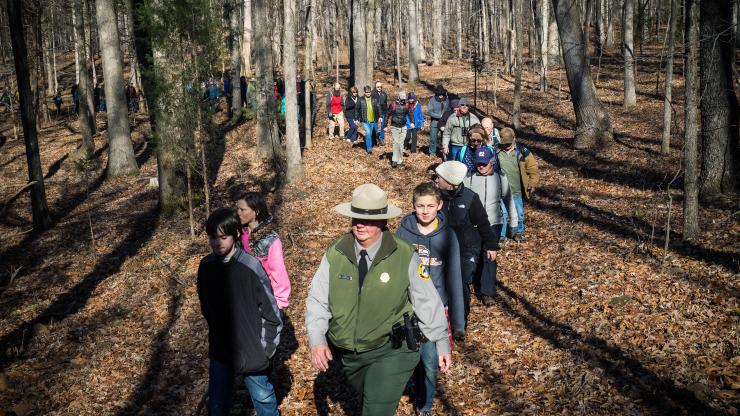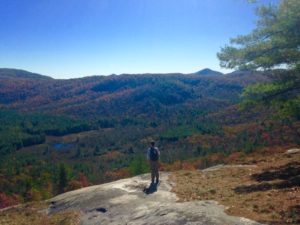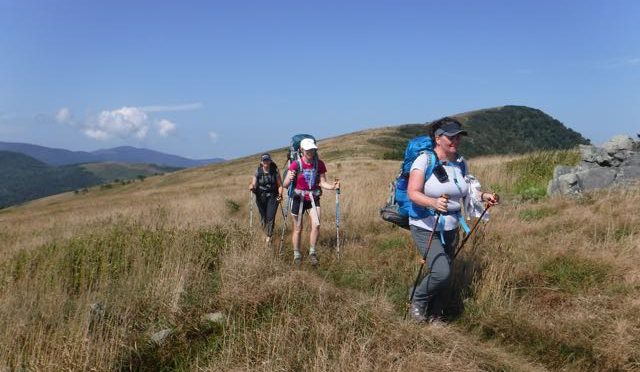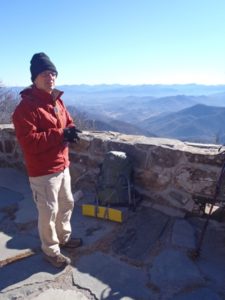Thanksgiving is behind us, the end of the year is bearing down: it’s the time we start thinking about next year, the new year and what promise it might hold. About the opportunity to, if not reinvent ourselves, to work toward the version of ourselves we want to become, the image of us we’d like to see looking back in the mirror every morning.
Tag Archives: New Year’s resolutions
An active 2017 starts on Day One

We like to ward off the beginning of the work-week blues with thoughts about life on the outside.
It’s only one day. But it’s a day that can make a difference.
Sunday is the first day of the new year. Dating back 4,000 years to the Babylonians, we’ve looked at the day as a time for renewal and rebirth. We vow to be better people, we pledge to take better care of ourselves. In fact, the latter, staying fit and healthy, is the most popular New Year’s resolution we make, according to at least one survey.
According to another, it’s the most common resolution we break.
Despite this dubious track record, we persist. Using the New Year as a crutch is especially attractive if the year about to pass failed to meet expectations. Judging from the woe-is-me Facebook rants we’ve been seeing the past couple weeks, Sunday could be a record-breaker for New Year’s resolutions. So we want to do our best to help make sure you at least get January 1 off to a good start.
On Sunday, thanks primarily to North Carolina State Parks, there should be no reason not to get the year off to an active start. On Sunday, more than 40 guided hikes are scheduled at North Carolina’s state parks as part of the nationwide First Day Hikes Program. The First Day program is relatively new, though the concept in North Carolina dates back more than 40 years at Eno River State Park. Last year, 3,469 hikers logged 8,228 miles on First Day hikes in North Carolina.
The hikes offer something for just about everyone. Don’t want to waste a second putting your 2017 resolution to work? Chimney Rock State Park’s hike starts at 12:01 a.m. (on a 7-mile hike that gains 1,200 feet of elevation). If it snows, Grandfather Mountain State Park will give its hikers snowshoes. At coastal Fort Macon State Park, they’ll break in the new 3.2-mile Elliott Caues Trail, while at Falls Lake State Recreation Area, four short hikes will include scavenger hunts.
It all sounds like an attractive and painless way to get the year off to a good, active start, no? It is, and you’re not the only person to think so: if the weather’s right, the hike at Eno River State Park has been known to draw as many as 800 hikers.
So while 40-plus hikes throughout the state may seem like a lot, we feel there’s always room for more. The Hike NC! hiking initiative launched by Blue Cross and Blue Shield of North Carolina this fall (and in which we are a happy collaborator, along with N.C. State Parks, Friends of State Parks, N.C. Recreation and Park Association and Great Outdoor Provision Co.) is adding another six hikes to the list (learn more about the hikes and sign up, here). They are:
This year, don’t just set a goal, set the right goal
The following originally ran here on Jan. 1, 2012. The sentiment holds.
“You know,” Chris said, “there aren’t too many people who could do this.” After catching his breath, he added, “And I don’t mean people our age. I mean people, period.”
We were on day three of a four-day, 50-mile backpack trip on a particularly rugged region of the rugged Nantahala National Forest in western North Carolina. Specifically, we were about a third of the way up a climb that would see us gain close to a thousand vertical feet in less than a mile. It was not the first such climb we had encountered. In fact, much of this trip had been something of a roller coaster, with long, slow, steep climbs followed by long, slow, steep descents (I said something of a roller coaster). My quads and calves ached on the former, my knees on the latter. Yet here we were, me at 55, Chris David at 67, plugging along at a good clip, averaging about 2.5 miles per hour.
Chris’s proclamation wasn’t old guy braggadocio or uninformed speculation. He’s been backpacking since the early 1960s, thru-hiked the Appalachian Trail in 1983, and has been leading hikes for the Sierra Club for more than a decade. He’s hiked with beginners, he’s hiked with people who are on the trail as much as he is. He knows backpackers.
“I’d say about 1 percent,” he said, throwing a statistic into the mix. “No, make that one tenth of 1 percent.”
I won’t deny I found some satisfaction in Chris’s assessment, but I was mainly just glad that I could do this. That I could hike all day with 35 pounds on my back, that I could experience the winter-clear 360-degree view from atop 5,342-foot Wayah Bald, that I could stand beneath London Bald and stare down a treed bobcat not 10 feet away, that I could survive the wild gorge trying to contain Ledbetter Creek and stand atop Cheoah Bald, enshrouded in a cold rain trying to turn to snow wondering what the view might be like. That I, an absent-minded guy who is just as likely to find his car keys in the fridge as in the key bowl, would be able to remember nearly every step of this trip two weeks hence.
That reminded me of the one other thing I’m good at remembering, the thing that made it possible for me to be here in the first place:
The importance of setting the right goals.
Setting the right goals
Set a goal and the rest will follow. Advice that may seem obvious on this, the first day of the new year when so many of us are intent on erasing our bad habits and charting a new course. Goals are the carrots we employ to help us achieve an end to a means. Unfortunately, many of us won’t make it to February with our goal for the year intact.
Why?
We may set goals, but often we don’t set the right goals, the goals that we’re truly motivated to achieve.
Take Chris. Chris is a long-time runner, with 68 marathons under his belt since his first, the Marine Corps, in 1986. But it’s not the races that continue motivating him to run 50 miles a week. It’s the opportunity to do trips such as this, or his recent 63-mile backpack trip through the Smokies, or the 155-mile solo trip he did in the Nantahalas a couple years back. Or that make him think about another thru-hike on the AT. Backpacking in the wild is his true motivation.
My mountain biking buddy Peter Hollis is likewise driven by what for him is the right goal. Most people either lie about their age or demure when the topic is broached. Peter is likely to bring up his age, apropos of nothing, in the first sentence or two of an encounter.
At the start of the Huck-A-Buck cross-country mountain bike race at Lake Crabtree this summer, Peter lamented the fact that they didn’t announce our ages at the start (at 59, he was the oldest contestant — and proud of it). When I ran into him at Umstead a few days ago, the second thing he said (after updating me on trail conditions), was, “Well, as of January 1 my race age for this year is 60.” Peter claims he races to stay in shape, not to win. But he’s quick to add that he wants to be the fastest 60-year-old on the trail, and if he can whip some 40- and 30-year-olds in the process (which he does), so much the better. Being able to ride a gray streak is his true motivation, his real goal. If he wins the race, and he often does, so much the better.
The right goal for you
Setting the right goal may require a little introspection.
Take the No. 1 health-related goal that so many people will set today: to lose weight. Is it really the weight that’s important? Is it strictly a numbers game, to see the scale record 10 fewer pounds by the end of January, 10 fewer still by Leap Day?
Or is weight loss a secondary benefit of your true goal? Is your true goal to fit into a size 4 dress by prom? To abandon your 1920s-fashionable tank suit for a bikini come summer? To shave three minutes off your 5K time? Focus on your true goal and secondary benefits, such as weight loss, will follow.
Knowing your true goal will also make it easier to come up with an effective strategy for reaching said goal.
During my junior year in college (my second junior year), I had managed to balloon up over 200 pounds going into winter break. For Christmas, Santa brought me a lime green polyester Addidas running suit. The running boom of the ‘70s was just kicking in and I decided then and there that I would be able to run 5 miles by the end of the semester. Starting that afternoon and continuing for the next four months I put one foot in front of the other faster and more often than I had the day before.
Darned if the semester didn’t come to an end and I was running 5 miles. And darned if I hadn’t lost 45 pounds in the process. Walking across the quad one day in April, a former suitemate whom I hadn’t seen in a while stopped me, eyes agog, and asked, “What the hell happened to you?”
I hesitated, both to let my friend twist over what he could only be thinking — that I was deathly ill, because in our acquaintance I had never once demonstrated anything resembling discipline or restraint — but also to ponder the question: What the hell had happened to me?
I thought back to my rotund self sitting next to the Christmas tree contemplating the lime green polyester Addidas running suit which had inspired my true goal.
“I want to be a runner.”
* * *
Need help?
You’ve set your goals — now, how to make them reality? Sometimes all you need to help you achieve a goal is a little help, a little direction. Someone to help you set a challenging goal, someone to help you form a plan to get there, someone who sticks with you until your goal is in the books. What you need is an Adventure Coach.
Adventure Coach?
Read about this new service from GetGoingNC, here.
Avoid the adventure blues in 2016: get an Adventure Coach

It’s an all-too-familiar lament this time of year: I meant to get out more, be more adventurous. I don’t know what happened …
You look back on the camping weekend that instead turned into a garage-cleaning weekend, the paddle trip that wasn’t because the water wasn’t just right. The hike that, as the day neared, you didn’t feel you were in shape for.
And now, the year drawing to a close, you find yourself melancholy with regret. You felt this way at the end of last year, now that you think about it. And perhaps the year before that as well.
To be clear, no one gets out enough. Asked, “Getting out much?” I doubt anyone has ever replied, “Sure. More than enough, actually.”
There’s not getting out enough and there’s not getting out anywhere near enough. Followed by a heavy sigh.
The good news?
Now is the time to make sure the pattern doesn’t continue, that you don’t feel this same way again next year.
Start by putting your woe-is-meness to good use. How many nights would you have been content — no, happy — to have spent in a tent this past year? Write it down: that’s your 2016 goal. Same with your number of days on the trail. Was it half as many as you’d hoped? Write down your ideal number. Maybe you wanted to try backpacking in 2015 — but didn’t. Add that to the list. Likewise, your number of days on the water, or whatever your adventure of choice.
Making a list of adventure goals is a good first step. In fact, it’s the key step because these are the goals you want to reach, unlike those health goals from New Year’s resolutions past: to drop three sizes by bikini season, to evict refined sugar from your diet, to see your toes again.
Adventure goals: enjoy the journey
Adventure goals are as worthy for the journey as for the end result. (Who gets as excited about six months of cottage cheese and grapefruit as they do about being able to slip back into their high school parachute pants?)
You’ve set your goals, you’re excited. Here’s where the problem typically arises, when you ask yourself, How do I make it happen?
What you need is direction to help you figure out these key questions:
Is your resolve fading?
I wrote the following for The News & Observer and Charlotte Observer. It ran in both papers on Feb. 12, 2013. It runs here, with links.
If you were one of the millions of Americans who vowed to live a healthier lifestyle in 2013, you may be edging toward the window of despair. But you probably already knew that.
“We’ve tracked the patterns,” Sue Dissinger, Health and Wellness Director for the YMCA of Greater Charlotte, says of people who vow to improve, “and after 30 to 60 days people start to slowly decline or quit.”
The YMCA’s figures, based on years of study, are echoed by the health and fitness world at large: Despite the best intentions, people tend to lose enthusiasm for a new and healthy lifestyle after about a month of sweating and watching what they eat.
Why does that happen? “We often make our goals too big, too ambitious,” says Lori Stevens, a registered dietician with WakeMed Cary Hospital. “We say, ‘Once the year starts I’m going to cut all sugar out of my diet.’ That’s extreme. It’s not sustainable.”
It’s also not inevitable, this throwing in of the gym towel.
Strategies that will keep you on track:
* Revisit your ‘plan’. You do have a plan, don’t you?
“The main reason most people fail is because they don’t have a plan,” says Ronnie Neal, a wellness instructor at Rex Wellness Center of Wakefield in North Raleigh. It needs to be a specific goal, not just “I want to lose weight,” or “I want to get in better shape.” You need both short-term and long-term goals, and you need to be able to visualize those goals.
• Have a realistic goal. Cutting out all sugar, as Stevens noted earlier, isn’t feasible. What is, she says, is vowing to skip dessert on weeknights and indulge only on weekends. “Or instead of saying, ‘I’m going to work out every day and run a marathon in March, say you’ll work out five days a week and do a 5K in April, then maybe a 10K in June and a half-marathon or marathon in the fall.”
• Write down your goal. “Writing down your goals hardwires them a little more into your subconscious,” says Neal.
•
Be patient


